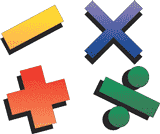Before we go into the division technique, let s take a closer look at the number 9. In the number system base "10", number 9 =(base system no-1) ie it s one less than the base number. This observation leads us to its another property ie the divisibility rule of 9. To check if a number is divisible by 9, we just add up the digits of the number. If that sum is divisible by 9, the original number is also divisible by 9. Another corollary to this is, if we get a remainder when we divide the sum of digits by 9, then that remainder would be the remainder when we divide the original number by 9.
Example : 558 / 9
5+5+8 = 18 is the sum of the digits
now, divide this by 9 => 18/9 gives remainder 0, hence 558 is divisible by 9.
278 /9
2+7+8 = 17 is the sum of the digits
now,divide this by 9 => 17/9 gives remainder 8, hence 278/9 will also give a remainder of 8.
Now, that we are done with the remainder concept, how do we find the quotient then ???
That is lot more easy than the above method.
Example : 132/9
Write down the digits of the number 132.
On the next line, write the first digit of the number, next digit will be this number plus the next digit(add diagonally), and this pattern continues.
1 3 2
↓➚↓➚↓
1 4 6
In this 14 is the quotient and 6 is the remainder !
5 5 8
↓➚↓➚↓
5 10 18
Since the second digit in the result is 10, add 1 to the 5, hence it ll be like
6 0 18
18 is still divisible by 9, giving 2 as the quotient, add it to 60 giving 60+2 =62 this is the quotient and 0 is the remainder !
